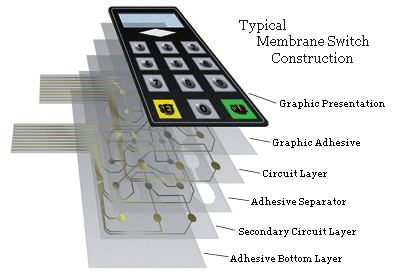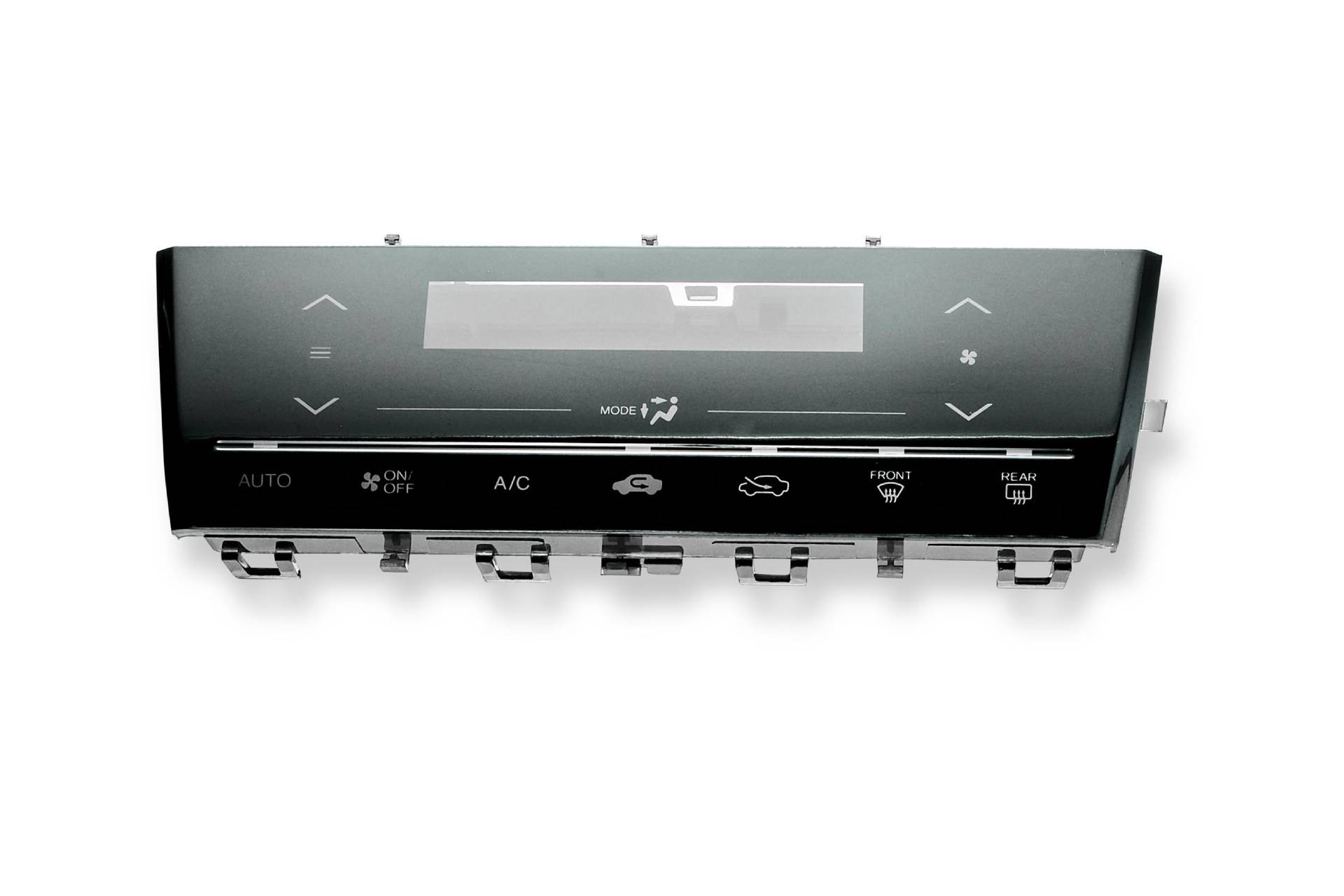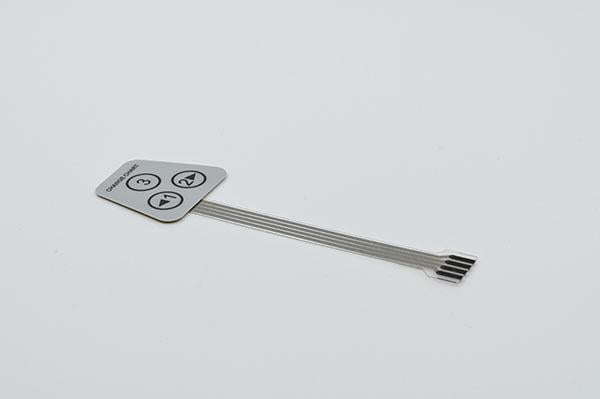Partnering with an experienced membrane switch manufacturer enhances your manufacturing process.
All Regarding Membrane Layer Change: Recognizing Its Layout and Performance
When you consider the control interfaces in modern-day gadgets, membrane layer buttons often enter your mind. These elements are much more than simply buttons; they mix layout and performance perfectly. Recognizing how they work and what makes them efficient can alter your viewpoint on daily electronic devices. However, there are nuances to their layout and performance that you may not recognize. Allow's explore what collections membrane switches over aside from other control systems.
What Are Membrane Buttons?

Their seamless nature makes them easy to tidy and immune to dust and wetness, a vital feature in lots of settings. Membrane layer switches can likewise be tailored relating to form, dimension, and graphics, permitting manufacturers to create one-of-a-kind user interfaces tailored to particular products. Plus, they're lightweight and thin, which helps in lessening the general mass of devices. Overall, membrane switches play a significant duty in boosting individual experience across a wide range of applications.
Exactly How Membrane Layer Switches Over Work
When you push a key on a membrane layer switch, it activates a simple yet effective system. The leading layer, usually made from flexible material, presses down onto a conductive layer under it. This activity bridges the gap in between conductive traces, completing an electric circuit. As quickly as the circuit shuts, it sends a signal to the device's controller, which analyzes your input.
You'll discover that the tactile responses varies based upon the button design, using either a soft click or an extra obvious reaction. When you launch the trick, the membrane go back to its original placement, resuming the circuit and stopping the signal. This process occurs nearly instantaneously, making sure a receptive user experience.
Membrane buttons are preferred due to their longevity and resistance to dirt and moisture, making them suitable for numerous applications, from family devices to medical tools. Understanding this operation helps you appreciate their prevalent use.
Trick Components of Membrane Buttons
Understanding the key elements of membrane switches is basic for realizing their performance and style. The protective layer guards versus environmental variables and wear, prolonging the button's life-span. By comprehending these elements, you'll gain understanding into just how membrane switches over run and their importance in numerous applications.
Products Utilized in Membrane Change Design
The efficiency and toughness of membrane switches greatly depend upon the products used in their style. You generally run into polyester and polycarbonate as key substratums as a result of their outstanding toughness and versatility. These products resist scrapes and chemicals, making them perfect for requiring atmospheres.
The conductive layers often make use of silver or carbon, chosen for their integrity and conductivity. membrane switch manufacturer. Silver offers exceptional performance, while carbon is a cost-effective alternative. For the overlay, you may consider a matte or shiny finish, depending on your aesthetic needs and customer experience
Adhesives play a vital duty as well; they bond layers safely and ensure longevity. Make sure to choose adhesives that stand up to environmental elements like temperature and look these up humidity. Do not ignore the relevance of a great printing strategy for graphics, as it enhances both capability and aesthetic charm. Selecting the appropriate products will guarantee your membrane layer switch stands the examination of time.
Style Factors To Consider for Membrane Buttons
While making membrane switches, it's essential to think about numerous factors that influence their functionality and customer experience. Begin by concentrating on the layout and switch size; make sure they're intuitive and very easy to navigate. Take into consideration the responsive comments you wish to supply-- will individuals require a visible click or a read softer touch? In addition, think regarding the products you'll use, as they'll influence durability and aesthetics.
Don't overlook the graphic design; clear labeling and color contrast are substantial for exposure. Verify your layout fits ecological elements, like moisture or temperature variants, which could impact performance. Remember the significance of testing prototypes with real individuals to gather responses and make needed adjustments. This iterative procedure aids you improve the layout, verifying it satisfies both useful and visual requirements successfully. By thoroughly thinking about these aspects, you'll produce a membrane layer switch that improves functionality and satisfaction.
Applications of Membrane Buttons
Membrane layer switches are flexible elements discovered in different applications, from industrial equipment to consumer electronics. You'll see their effect in machines that need resilient user interfaces and in tools that take advantage of sleek styles. Understanding these applications helps you value the performance and practicality of membrane layer switches in day-to-day modern technology.
Industrial Tools Use
When you're looking to boost the functionality of commercial tools, membrane switches use a reliable remedy that combines resilience with user-friendly design. These switches are ideal for extreme settings, giving resistance to dust, wetness, and chemicals. Embrace membrane layer switches to streamline your operations and enhance general performance.
Customer Electronic Devices Assimilation
In the domain of consumer electronic devices, membrane layer buttons play a vital function in boosting individual interaction and gadget functionality. Membrane layer switches likewise guarantee resilience and resistance to dust and moisture, extending the life-span of your electronic devices. By picking membrane buttons, you enhance not simply the functionality yet additionally the style of your gadgets, making everyday communications smooth and enjoyable.
Benefits and Disadvantages of Membrane Layer Switches
While membrane buttons offer a range of advantages, they likewise come with some drawbacks that you need to take into consideration. One considerable advantage is their portable style, making them suitable for space-constrained applications.

Membrane layer buttons can have a much shorter lifespan compared to mechanical buttons, especially under heavy use. They can also be much less tactile, which might impact customer feedback throughout operation. Stabilizing these pros and cons will certainly assist you figure out if membrane switches are the right fit for your job.
Regularly Asked Inquiries
How Much Time Do Membrane Layer Switches Over Commonly Last?
Membrane layer switches normally last in between 5 to one decade, relying on usage and environmental conditions. You'll intend to evaluate factors like wear, direct exposure to wetness, and temperature fluctuations to evaluate their durability efficiently.
Can Membrane Layer Switches Be Custom-made for Specific Styles?
Yes, you can tailor membrane layer buttons to fit specific styles (membrane switch manufacturer). You'll have the liberty to choose shades, forms, and formats that match your project's needs, ensuring they mix perfectly with Source your general aesthetic
What Is the Expense Array for Membrane Switch Over Manufacturing?
The cost range for membrane layer switch manufacturing commonly drops between $1 and $10 per unit, depending upon factors like design intricacy, quantity, and products. You can obtain quotes from makers to find the most effective alternative.

Are Membrane Layer Changes Water-proof or Immune?
Membrane layer switches can be designed to be water resistant or resistant, depending on materials utilized and construction methods. If you need them for damp settings, guarantee you define those needs during the layout process.
Exactly How Do Membrane Layer Switches Over Compare to Standard Switches?
Membrane layer buttons are normally thinner and much more flexible than traditional switches, providing a smooth design. They're frequently less complicated to cleanse and integrate, but might not give the responsive feedback you're made use of to with mechanical alternatives.
Conclusion
